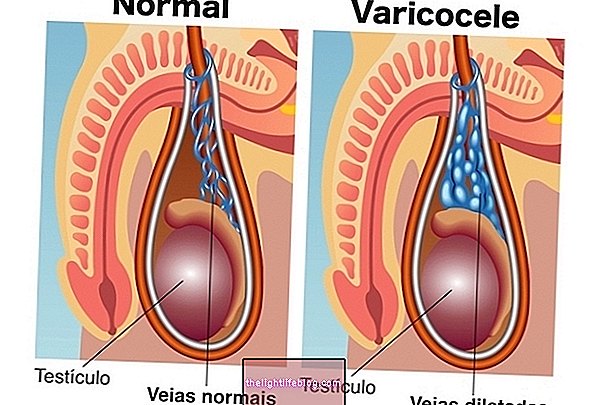Splenectomy is the surgery for total or part of the spleen removal, which is responsible for producing, storing and eliminating some substances in the blood and producing antibodies, maintaining the balance of the body and avoiding infections.
Splenectomy is indicated in cases of disease in the blood or when there is disease in the spleen, such as cancer, and usually surgery is performed by laparoscopy, with small holes in the abdomen that make the scar very small and increase the chance of a high faster.
The spleen is a very small organ that lies on the upper left side of the abdomen, and in case of having to remove the spleen, it is preferable to have a partial splenectomy instead of completely removing the spleen, but this depends on several factors that should be decided by the doctor.


How to Prepare for Surgery
Before the surgery the doctor will instruct the patient to perform a blood test, an ultrasound to evaluate the presence of stones in the gallbladder and to take the pneumococcal vaccine 2 weeks before the surgery. In addition, in most cases, the patient initiates antibiotic, such as cephalosporins even before surgery, to avoid the risk of infection.
When surgery is indicated
Removal of the spleen may be indicated by the physician in situations such as:
- Cancer in the spleen;
- Abdominal trauma that has reached the spleen;
- Spotaneous rupture of the spleen, in case of leukemia, mainly;
- Spherocytosis;
- Sickle cell anemia;
- Idiopathic thrombocytopenic purpura;
- Splenic abscess;
- Congenital hemolytic anemia;
- Hodgkin lymphoma staging;
The spleen can be removed partially or completely.
How is the surgery done
In most cases, video laparoscopy is indicated, and 3 small holes are made in the abdomen, through which tubes and instruments are needed to remove the spleen without having to make a large cut. The patient needs general anesthesia, and the surgery takes, on average, 3 hours, being hospitalized for about 2 days.
This surgical technique is less invasive and therefore causes less pain and the scar is smaller, and recovery and return to daily activities are faster. However, in some cases, it may be necessary to have open surgery, with a larger cut.
Risks and Possible Complications of Surgery
After spleen removal surgery, it is normal for the patient to have pain and some limitation to perform the day-to-day activities alone, requiring the help of a relative to perform hygiene care, for example.
Laparoscopic surgery can bring complications such as hematoma, bleeding or pleural effusion. However, open surgery can bring more risks.
People with malaria may get worse after removing the spleen.
Care for those who removed the spleen

After removal of the spleen, the body's ability to fight infection is diminished and other organs, especially the liver, increase its ability to produce antibodies to fight infections and protect the body. Thus, the skin is more prone to develop infections and septicemia due to pneumococcus, meningococci and H influenza, and therefore should:
- Take the multipurpose vaccines against pneumococci and conjugate vaccine for H. influenza type B and meningococcus type C between 2 weeks before and 2 weeks after surgery;
- Take the pneumococcal vaccine every 5 years (or at shorter intervals for sickle cell anemia or lymphoproliferative diseases);
- Take low-dose antibiotics for a lifetime or take benzathine penicillin every 3 weeks.
In addition, it is also important to eat a healthy diet, avoiding foods rich in sugar and fat, exercise regularly, avoid sudden changes in temperature to avoid colds and flu, and not take medicines without medical advice.






















